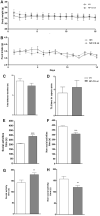Prosocial Effects of Nonpsychotropic Cannabis sativa in Mice
- PMID: 34370607
- PMCID: PMC9070742
- DOI: 10.1089/can.2021.0017
Prosocial Effects of Nonpsychotropic Cannabis sativa in Mice
Abstract
Introduction:Cannabis sativa L. (C. sativa) is used since ancient times to produce fabrics, baskets, and cords. Later, different ethnic groups used to burn the leaves and flowers of psychotropic cultivars with high Δ9-tetrahydrocannabinol (D9-THC) levels, during the religious or propitiatory rites to alter the state of consciousness. To date, it is not known whether also nonpsychotropic cultivars of C. sativa were used during these rites, and whether these varieties could have an effect on human behavior. This study aimed to evaluate the behavioral effects of an extract of nonpsychotropic C. sativa (NP-CS) in mice. Materials and Methods: An extract of a nonpsychotropic cultivar of C. sativa dissolved in medium-chain triglyceride oil was used and the different phytochemical components were evaluated. The relative composition in terms of phytocannabinoid content was assessed by reverse phase high-performance liquid chromatography coupled to UV detection (RP-HPLC-UV), and the volatile components were analyzed by gas chromatography-mass spectrometry (GC-MS). In addition, the behavioral effect of NP-CS was assessed on a wild-type mouse model. The animals were treated for 14 days (oral gavage) and motility, anxiety, and social effects were assessed. Results: RP-HPLC-UV analysis demonstrated that D9-THC was present in lower concentration with respect to other cannabinoids, like cannabidiol. Furthermore, the GC-MS analysis revealed the presence of several terpenoids. Concerning in vivo studies, chronic treatment with NP-CS did not alter body weight, motility, and anxiety and increased social interaction. Conclusions: This study highlighted the prosocial effects of NP-CS.
Keywords: Cannabis sativa; behavior; cannabidiol; sociability; Δ9-tetrahydrocannabinol.
Conflict of interest statement
No competing financial interests exist.
Figures


References
-
- Bonini SA, Premoli M, Tambaro S, et al. . Cannabis sativa: a comprehensive ethnopharmacological review of a medicinal plant with a long history. J Ethnopharmacol. 2018;227:300–315. - PubMed
-
- McPartland JM, Guy GW, Hegman W. Cannabis is indigenous to Europe and cultivation began during the Copper or Bronze age: a probabilistic synthesis of fossil pollen studies. Veg Hist Archaeobot. 2018;27:635–648.
-
- Nagy DU, Cianfaglione K, Maggi F, et al. . Chemical characterization of leaves, male and female flowers from spontaneous cannabis (Cannabis sativa L.) growing in Hungary. Chem Biodiv. 2019;16:e1800562. - PubMed
-
- Long T, Wagner M, Demske D, et al. . Cannabis in Eurasia: origin of human use and Bronze Age trans-continental connections. Veg Hist Archaeobot. 2017;26:245–258.
Publication types
MeSH terms
Substances
LinkOut - more resources
Full Text Sources
Miscellaneous

